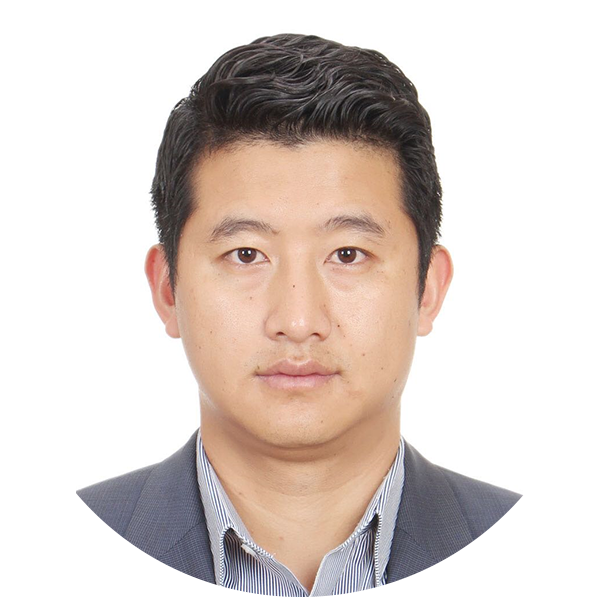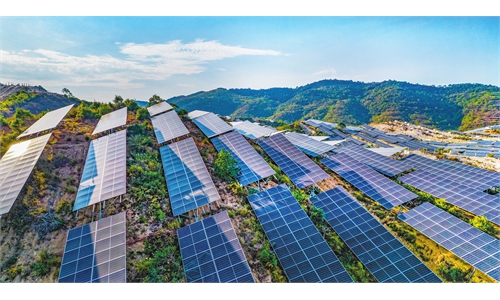Xiconomics in Practice: What does pursuit of Chinese modernization look like in remote, less-developed areas like Liangshan?
Chinese modernization means better life for people, a new model for world
Editor's Note:
Since 2012, China has witnessed an extraordinary economic transition, with historic achievements in all aspects of the economy from its size to quality. Such an unparalleled feat does not just happen, especially during a tumultuous period in the global geo-economic landscape and a tough phase in China's economic transformation and upgrading process. It was Xi Jinping Thought on Socialism with Chinese Characteristics for a New Era that guided the country in overcoming various risks and challenges, and in keeping the China economic miracle alive.
As China embarked on the quest to become a great modern socialist country amid global changes unseen in a century, Xi's economic thought has been and will continue to be the guiding principle for development in China for years to come, and have great significance for the world. What is Xi's economic thought? What does it mean for China and the world? To answer these questions, the Global Times has launched this special coverage on Xi's major economic speeches and policies and how they are put into practice to boost development in China and around the world.
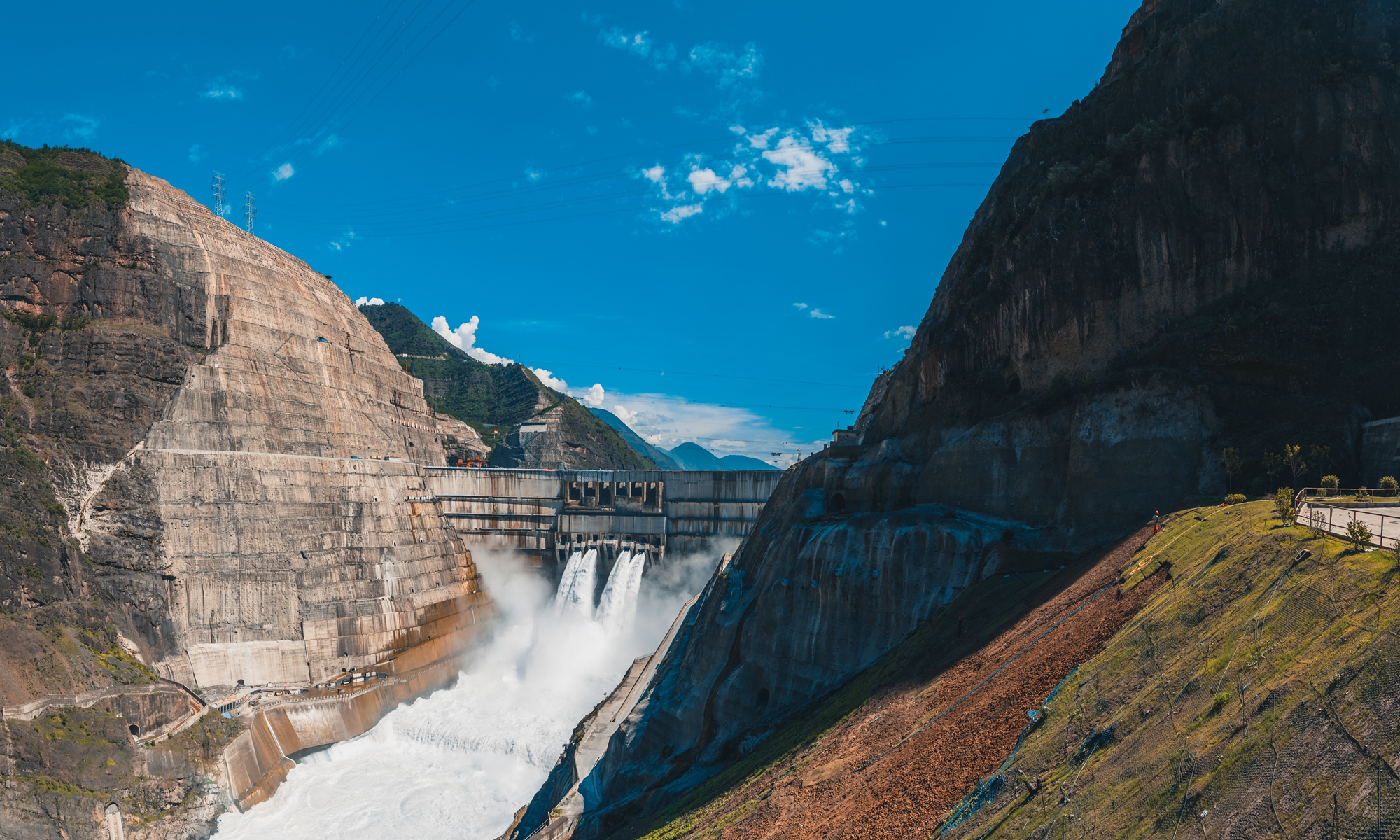
When President Xi Jinping visited Liangshan Yi Autonomous Prefecture, Southwest China's Sichuan Province in February 2018, the region, home to the largest ethnic Yi community, was still engaged in a tough battle against extreme poverty. Due to its harsh natural conditions and rough terrain, Liangshan, about 2,000 kilometers from Beijing, has long struggled with grinding poverty.
Liangshan was declared to be one of the three most severely impoverished prefectures in the national battle against poverty.
About three years later, in February, 2021, Xi announced that China had scored a "complete victory" in its fight against poverty, noting that absolute poverty had been eradicated in the world's most populous country - a miracle that will "go down in history."
After years of national and local efforts, Liangshan also witnessed the eradication of absolute poverty, with more than 1.05 million people lifted out of absolute poverty and 11 counties and 2,072 villages removed from the list of impoverished areas.
In the report to the 20th National Congress of the Communist Party of China (CPC) in October 2022, Xi, also general secretary of the CPC Central Committee, underscored the "central task" of the Party, calling for efforts to advance the rejuvenation of the Chinese nation on all fronts "through a Chinese path to modernization." And Liangshan, along with the entire country, has embarked on a path to achieving Chinese modernization with sweeping efforts in a wide range of areas from infrastructure building and economic development to environmental protection.
Liangshan's transformation over the years - from being one of the country's most impoverished areas to a key region in the country's modernization efforts - is a microcosm of China's efforts and achievements in exploring the Chinese path to modernization, which has become a historical task for the CPC. Likewise, in the course of the national battle against absolute poverty, such efforts and achievements in remote, less-developed areas like Liangshan are crucial in China's pursuit of achieving modernization with uniquely Chinese characteristics.
While addressing the opening of a study session at the Party School of the CPC Central Committee (National Academy of Governance) on February 7, Xi stressed the importance of correctly understanding and vigorously advancing Chinese modernization, noting that the modernization process of a country needs to follow the general rule of modernization, but it shall be suited to its realities and characterized by features unique to its context, according to Xinhua.
Chinese modernization is characterized by five features that are unique to the Chinese context - the modernization of a huge population, of common prosperity for all, of material and cultural-ethical advancement, of harmony between humanity and nature, and of peaceful development, according to Xinhua.
Such features require national efforts in a wide range of areas, including building modern infrastructure that supports sustainable economic and social development.
For remote areas like Liangshan, the common Chinese saying that in order to get rich, one must first build roads aptly describes its efforts in pursuing Chinese modernization. In that regard, major progress has been made.
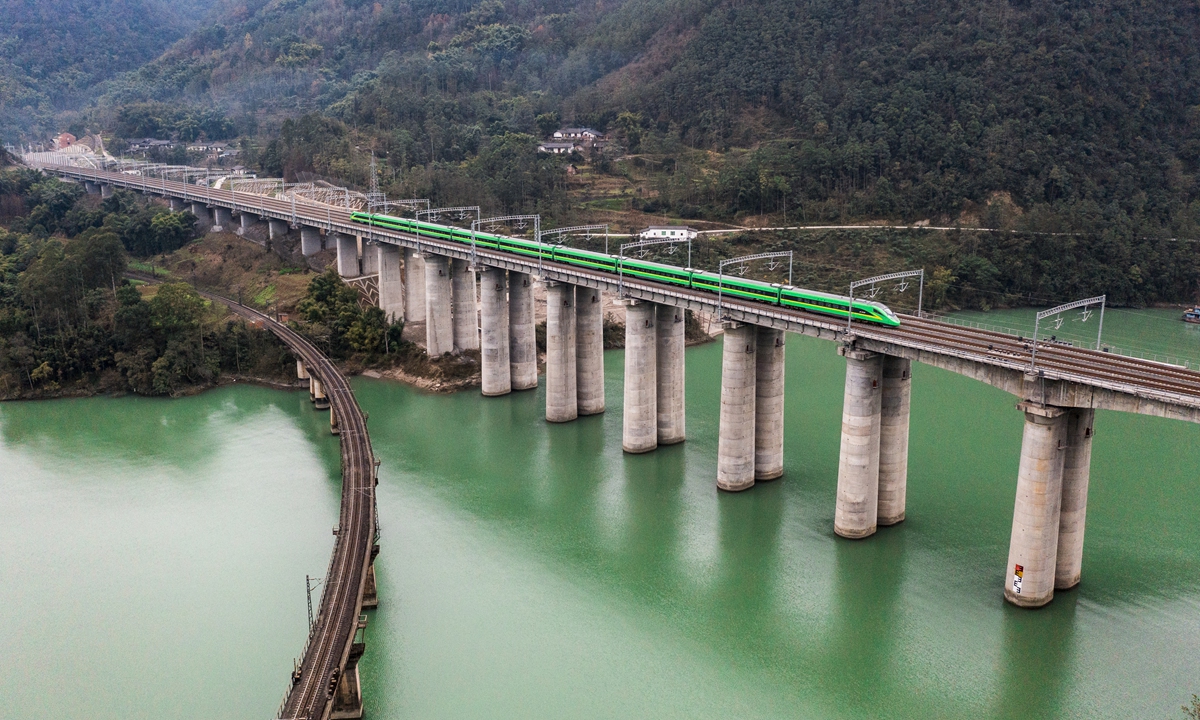
Major progress in Liangshan
On December 26, 2022, a high-speed railway line linking Chengdu, the provincial capital of Sichuan, and Kunming, Southwest China's Yunnan Province, which also runs through Liangshan, became fully operational.
On the day, with a brand new Fuxing bullet train, a new notch in the proverbial belt of the country's world-leading high-speed train technology, departing Chengdu for Xichang, a county-level city in Liangshan, the prefecture known for its dilapidated roads entered into the era of high-speed rail.
The new high-speed railway is of great significance to Liangshan's local social and economic development, as it further links the prefecture to other advanced regions and helps foster local tourism and other industries, said Shen Xiang, a local official in Liangshan. The railway cuts travel time between Chengdu and Xichang from 11 to 3 hours.
"I can now leave in the morning and arrive in Chengdu or Kunming and start working at noon, and [return to Xichang] conveniently in the afternoon," Shen told the Global Times, noting that the railway has helped adjust Liangshan's development to give full play to its advantages in coordinated regional development.
One of Liangshan's advantages is its rich hydropower resources, which are of national significance.
Six days before the Fuxing bulletin train arrived in Xichang for its inaugural commercial operation, on December 20, 2022, the Baihetan hydropower station, the world's second-largest in terms of total installed capacity, part of which is located in Ningnan County, Liangshan, became fully operational.
With a total installed capacity of 16 million kilowatts, the Baihetan hydropower station is crucial in China's clean energy drive toward sustainable development.
Baihetan's operation marked the completion of the world's largest clean energy corridor, where six mega hydropower stations on the Yangtze River transmit electricity from the resource-rich west to energy-consuming regions in the east.
For Liangshan, the power station means more job opportunities, more income, and faster social and economic development, according to Shen.
In the pursuit of Chinese modernization, better infrastructure is crucial, said Wang Yiwei, Jean Monnet chair professor and director of international affairs at the Renmin University of China.
"Better infrastructure has laid the foundation for industrial development, which has in turn brought prosperity and improved standards of living. Without these better roads, many products from remote areas would not be able to reach markets all over the world," Wang told the Global Times.
China has been making great strides in building modern infrastructure and shifting to clean energy. For example, at the end of 2022, the length of China's operational railways exceeded 155,000 km, including 42,000 km of high-speed railway lines alone, and it plans to build more than 3,000 kilometers of railways in 2023, including 2,500 km of high-speed lines. Also, China has become a world leader in renewable energy expansion, with renewables expected to account for 36 percent of electricity consumption by 2025, according to some estimates.
As the five features of Chinese modernization indicate, comprehensive development in areas such as economy, culture, and urbanization is also key.
In Liangshan, after years of poverty alleviation efforts, villages that were once "too far away" from "modernization" without electricity or running water have transformed and many villagers have been relocated to "modern" communities with modern facilities and amenities, said Ake Jiushe, a local official and award-winning author of books on Liangshan's poverty alleviation work.
"[Liangshan] took a giant thousand-year leap in just a few decades," as it emerged from thousands of years of isolation and became highly connected to the outside world, from backwardness to modernity and from poverty to moderate prosperity, Ake told the Global Times.
Beyond modern infrastructure, once impoverished counties in Liangshan like Zhaojue are also seeing continuous improvements in cultural services, with more and more cultural facilities and events being made available, according to Ake.
Liangshan has also become nationally known for its traditional Yi culture, with its colorful costumes and exotic events like the Torch Festival and folk music, attracting many tourists from Sichuan and across China. During this year's Spring Festival holidays, for example, Liangshan saw more than 3 million visitors, up 39.37 percent year-on-year, and 2.4 billion yuan in tourism revenue, up 107.82 percent year-on-year, according to local official data.
It is the nationwide efforts under the firm leadership of the CPC that have lifted millions of people in Liangshan and across the country out of poverty, and the CPC's leadership, with Xi at the helm, also provides guarantees that the pursuit of Chinese modernization will be successful, despite various challenges and risks, experts said.
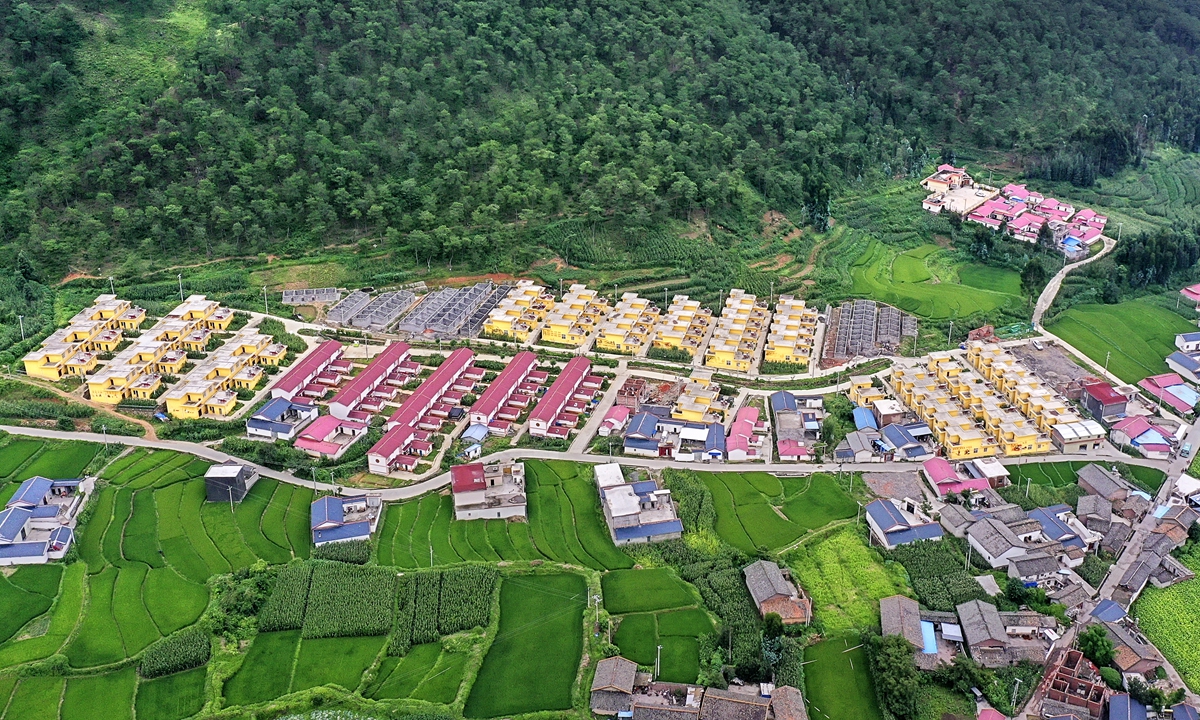
A new global solution
Unique conditions in China's vast rural areas like Liangshan as well as the country's unique history and governing system, among other factors, mean that Chinese modernization is different from the Western style of modernization currently prevailing in the world, though there are also commonalities.
While giving his speech on February 7, Xi said Chinese modernization is a new model for human advancement, and it dispels the myth that "modernization is equal to Westernization," presenting another picture of modernization, and expanding the channels through which developing countries can achieve modernization, and provides a Chinese solution to aid the exploration of a better social system for humanity, according to Xinhua.
"There are many commonalities with Western modernization… at the same time, there are clear differences. For instance, Western culture promotes individualism and egoism, while in China altruism is more highly valued. Western countries' modernization unfolded in tandem with their colonization of other countries, whereas China's modernization is being achieved through peaceful development and win-win outcomes," Wang said.
Western modernization, especially modernization dominated by the Anglo-Saxon model of capitalism, has led to a dichotomy of modernity vs. backwardness through which the West views nations, whereas Chinese modernization is transforming the story of modernization by shedding a light on a new form of human advancement, according to Wang.
Yury Tavrovsky, head of the "Russian Dream-Chinese Dream" analytic center of the Izborsk Club, said that Chinese modernization has become an open challenge to the liberal-capitalist model.
"In a few decades, China has traveled on a path that took Western countries centuries to complete," Tavrovsky told the Global Times, noting China is striving for greater efficiency than that provided by the capitalist model, while maintaining justice in society.
In his speech, Xi also said innovation must be prominently placed in overall national development, and efforts must be made to achieve higher efficiency than can be found in capitalism while maintaining fairness in society more effectively.
Although the Chinese path offers nations a new option for the pursuit of modernization, "China does not call on other nations to follow its development strategy as an exact model, but rather, like China, seek a development path that suits their own national conditions," Wang said.
Meanwhile, for China, "the cause of promoting Chinese modernization, which is an unprecedented and pioneering venture, will inevitably encounter all kinds of risks, challenges, difficulties, and even dangerous storms, some of which we can foresee and others we cannot," Xi said. "Let us harness our indomitable fighting spirit to open new horizons for our cause."
Such a cause, for Chinese people across the country, including in Liangshan, means a better life.
"If we keep advancing along the road of Chinese-style modernization, the lives of the people of all ethnic groups in Liangshan will be better," said Ake.
Wang Wenwen contributed to the story
Since 2012, China has witnessed an extraordinary economic transition, with historic achievements in all aspects of the economy from its size to quality. Such an unparalleled feat does not just happen, especially during a tumultuous period in the global geo-economic landscape and a tough phase in China's economic transformation and upgrading process. It was Xi Jinping Thought on Socialism with Chinese Characteristics for a New Era that guided the country in overcoming various risks and challenges, and in keeping the China economic miracle alive.
As China embarked on the quest to become a great modern socialist country amid global changes unseen in a century, Xi's economic thought has been and will continue to be the guiding principle for development in China for years to come, and have great significance for the world. What is Xi's economic thought? What does it mean for China and the world? To answer these questions, the Global Times has launched this special coverage on Xi's major economic speeches and policies and how they are put into practice to boost development in China and around the world.

Baihetan hydropower project straddling the provinces of Southwest China's Yunnan and Sichuan Photo: VCG
When President Xi Jinping visited Liangshan Yi Autonomous Prefecture, Southwest China's Sichuan Province in February 2018, the region, home to the largest ethnic Yi community, was still engaged in a tough battle against extreme poverty. Due to its harsh natural conditions and rough terrain, Liangshan, about 2,000 kilometers from Beijing, has long struggled with grinding poverty.
Liangshan was declared to be one of the three most severely impoverished prefectures in the national battle against poverty.
About three years later, in February, 2021, Xi announced that China had scored a "complete victory" in its fight against poverty, noting that absolute poverty had been eradicated in the world's most populous country - a miracle that will "go down in history."
After years of national and local efforts, Liangshan also witnessed the eradication of absolute poverty, with more than 1.05 million people lifted out of absolute poverty and 11 counties and 2,072 villages removed from the list of impoverished areas.
In the report to the 20th National Congress of the Communist Party of China (CPC) in October 2022, Xi, also general secretary of the CPC Central Committee, underscored the "central task" of the Party, calling for efforts to advance the rejuvenation of the Chinese nation on all fronts "through a Chinese path to modernization." And Liangshan, along with the entire country, has embarked on a path to achieving Chinese modernization with sweeping efforts in a wide range of areas from infrastructure building and economic development to environmental protection.
Liangshan's transformation over the years - from being one of the country's most impoverished areas to a key region in the country's modernization efforts - is a microcosm of China's efforts and achievements in exploring the Chinese path to modernization, which has become a historical task for the CPC. Likewise, in the course of the national battle against absolute poverty, such efforts and achievements in remote, less-developed areas like Liangshan are crucial in China's pursuit of achieving modernization with uniquely Chinese characteristics.
While addressing the opening of a study session at the Party School of the CPC Central Committee (National Academy of Governance) on February 7, Xi stressed the importance of correctly understanding and vigorously advancing Chinese modernization, noting that the modernization process of a country needs to follow the general rule of modernization, but it shall be suited to its realities and characterized by features unique to its context, according to Xinhua.
Chinese modernization is characterized by five features that are unique to the Chinese context - the modernization of a huge population, of common prosperity for all, of material and cultural-ethical advancement, of harmony between humanity and nature, and of peaceful development, according to Xinhua.
Such features require national efforts in a wide range of areas, including building modern infrastructure that supports sustainable economic and social development.
For remote areas like Liangshan, the common Chinese saying that in order to get rich, one must first build roads aptly describes its efforts in pursuing Chinese modernization. In that regard, major progress has been made.

A bullet train runs on the new Chengdu-Kunming railway on December 16, 2022. Photo: VCG
Major progress in Liangshan
On December 26, 2022, a high-speed railway line linking Chengdu, the provincial capital of Sichuan, and Kunming, Southwest China's Yunnan Province, which also runs through Liangshan, became fully operational.
On the day, with a brand new Fuxing bullet train, a new notch in the proverbial belt of the country's world-leading high-speed train technology, departing Chengdu for Xichang, a county-level city in Liangshan, the prefecture known for its dilapidated roads entered into the era of high-speed rail.
The new high-speed railway is of great significance to Liangshan's local social and economic development, as it further links the prefecture to other advanced regions and helps foster local tourism and other industries, said Shen Xiang, a local official in Liangshan. The railway cuts travel time between Chengdu and Xichang from 11 to 3 hours.
"I can now leave in the morning and arrive in Chengdu or Kunming and start working at noon, and [return to Xichang] conveniently in the afternoon," Shen told the Global Times, noting that the railway has helped adjust Liangshan's development to give full play to its advantages in coordinated regional development.
One of Liangshan's advantages is its rich hydropower resources, which are of national significance.
Six days before the Fuxing bulletin train arrived in Xichang for its inaugural commercial operation, on December 20, 2022, the Baihetan hydropower station, the world's second-largest in terms of total installed capacity, part of which is located in Ningnan County, Liangshan, became fully operational.
With a total installed capacity of 16 million kilowatts, the Baihetan hydropower station is crucial in China's clean energy drive toward sustainable development.
Baihetan's operation marked the completion of the world's largest clean energy corridor, where six mega hydropower stations on the Yangtze River transmit electricity from the resource-rich west to energy-consuming regions in the east.
For Liangshan, the power station means more job opportunities, more income, and faster social and economic development, according to Shen.
In the pursuit of Chinese modernization, better infrastructure is crucial, said Wang Yiwei, Jean Monnet chair professor and director of international affairs at the Renmin University of China.
"Better infrastructure has laid the foundation for industrial development, which has in turn brought prosperity and improved standards of living. Without these better roads, many products from remote areas would not be able to reach markets all over the world," Wang told the Global Times.
China has been making great strides in building modern infrastructure and shifting to clean energy. For example, at the end of 2022, the length of China's operational railways exceeded 155,000 km, including 42,000 km of high-speed railway lines alone, and it plans to build more than 3,000 kilometers of railways in 2023, including 2,500 km of high-speed lines. Also, China has become a world leader in renewable energy expansion, with renewables expected to account for 36 percent of electricity consumption by 2025, according to some estimates.
As the five features of Chinese modernization indicate, comprehensive development in areas such as economy, culture, and urbanization is also key.
In Liangshan, after years of poverty alleviation efforts, villages that were once "too far away" from "modernization" without electricity or running water have transformed and many villagers have been relocated to "modern" communities with modern facilities and amenities, said Ake Jiushe, a local official and award-winning author of books on Liangshan's poverty alleviation work.
"[Liangshan] took a giant thousand-year leap in just a few decades," as it emerged from thousands of years of isolation and became highly connected to the outside world, from backwardness to modernity and from poverty to moderate prosperity, Ake told the Global Times.
Beyond modern infrastructure, once impoverished counties in Liangshan like Zhaojue are also seeing continuous improvements in cultural services, with more and more cultural facilities and events being made available, according to Ake.
Liangshan has also become nationally known for its traditional Yi culture, with its colorful costumes and exotic events like the Torch Festival and folk music, attracting many tourists from Sichuan and across China. During this year's Spring Festival holidays, for example, Liangshan saw more than 3 million visitors, up 39.37 percent year-on-year, and 2.4 billion yuan in tourism revenue, up 107.82 percent year-on-year, according to local official data.
It is the nationwide efforts under the firm leadership of the CPC that have lifted millions of people in Liangshan and across the country out of poverty, and the CPC's leadership, with Xi at the helm, also provides guarantees that the pursuit of Chinese modernization will be successful, despite various challenges and risks, experts said.

An aerial view of a village for people who had been relocated during poverty alleviation campaign in Liangshan Yi Autonomous Prefecture, Sichuan Province Photo: VCG
A new global solution
Unique conditions in China's vast rural areas like Liangshan as well as the country's unique history and governing system, among other factors, mean that Chinese modernization is different from the Western style of modernization currently prevailing in the world, though there are also commonalities.
While giving his speech on February 7, Xi said Chinese modernization is a new model for human advancement, and it dispels the myth that "modernization is equal to Westernization," presenting another picture of modernization, and expanding the channels through which developing countries can achieve modernization, and provides a Chinese solution to aid the exploration of a better social system for humanity, according to Xinhua.
"There are many commonalities with Western modernization… at the same time, there are clear differences. For instance, Western culture promotes individualism and egoism, while in China altruism is more highly valued. Western countries' modernization unfolded in tandem with their colonization of other countries, whereas China's modernization is being achieved through peaceful development and win-win outcomes," Wang said.
Western modernization, especially modernization dominated by the Anglo-Saxon model of capitalism, has led to a dichotomy of modernity vs. backwardness through which the West views nations, whereas Chinese modernization is transforming the story of modernization by shedding a light on a new form of human advancement, according to Wang.
Yury Tavrovsky, head of the "Russian Dream-Chinese Dream" analytic center of the Izborsk Club, said that Chinese modernization has become an open challenge to the liberal-capitalist model.
"In a few decades, China has traveled on a path that took Western countries centuries to complete," Tavrovsky told the Global Times, noting China is striving for greater efficiency than that provided by the capitalist model, while maintaining justice in society.
In his speech, Xi also said innovation must be prominently placed in overall national development, and efforts must be made to achieve higher efficiency than can be found in capitalism while maintaining fairness in society more effectively.
Although the Chinese path offers nations a new option for the pursuit of modernization, "China does not call on other nations to follow its development strategy as an exact model, but rather, like China, seek a development path that suits their own national conditions," Wang said.
Meanwhile, for China, "the cause of promoting Chinese modernization, which is an unprecedented and pioneering venture, will inevitably encounter all kinds of risks, challenges, difficulties, and even dangerous storms, some of which we can foresee and others we cannot," Xi said. "Let us harness our indomitable fighting spirit to open new horizons for our cause."
Such a cause, for Chinese people across the country, including in Liangshan, means a better life.
"If we keep advancing along the road of Chinese-style modernization, the lives of the people of all ethnic groups in Liangshan will be better," said Ake.
Wang Wenwen contributed to the story
